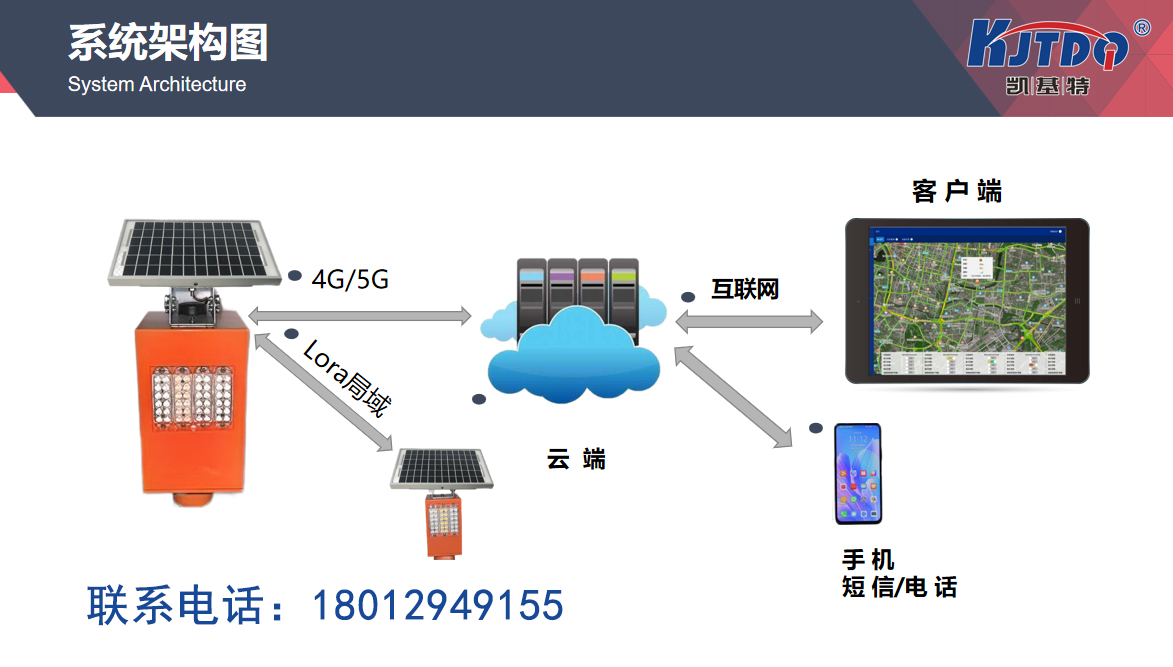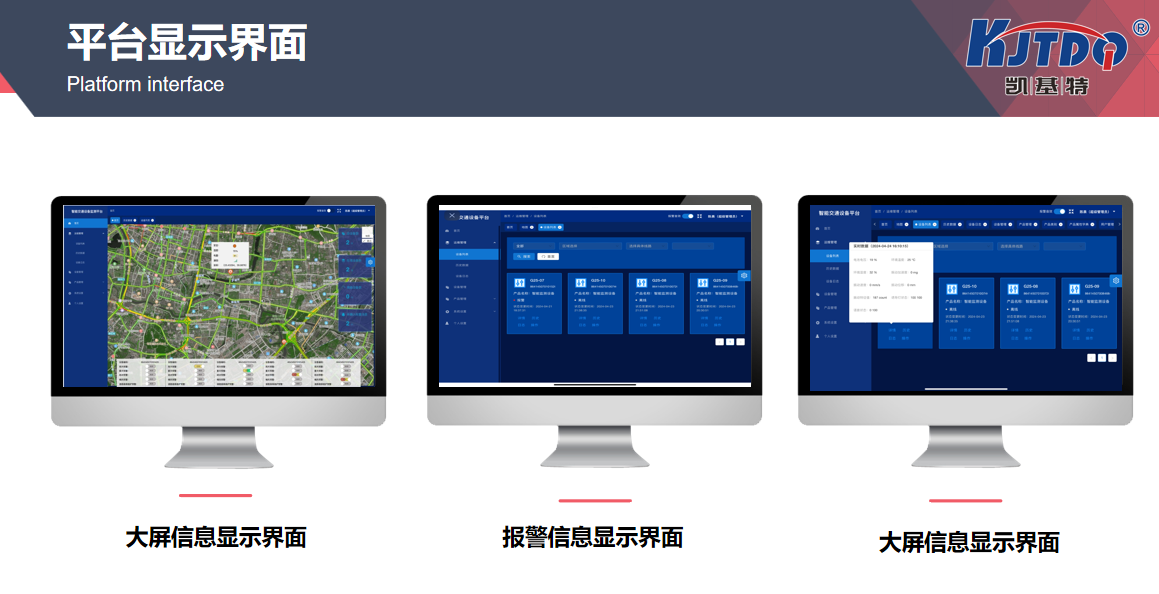In modern highway construction, highway collapse monitoring equipment plays a crucial role. These devices can not only monitor and warn potential collapse risks in real time, but also greatly improve the safety and reliability of highways. With the increase of traffic flow and changes in the natural environment, the problem of highway collapse has become increasingly serious, posing a significant threat to people's travel safety. In order to effectively address this challenge, the application of highway collapse monitoring equipment has become a key factor in ensuring highway safety.

The core function of highway collapse monitoring equipment is to detect and warn potential collapse risks of highways in real time. These devices can comprehensively monitor the geological structure, soil moisture, and settlement of highways through various sensors and monitoring technologies. Usually, these monitoring devices are installed in key areas where collapse may occur, such as slopes, under bridges, and at the edges of mountains. These areas are more prone to collapse due to complex geological conditions or drastic weather changes. Therefore, deploying highway collapse monitoring equipment is a necessary measure to prevent these risks.
Modern highway collapse monitoring equipment integrates advanced sensor technologies such as geological radar, inclinometers, strain gauges, and displacement sensors. These devices continuously collect on-site data and transmit it to the central monitoring system for analysis. Geological radar can detect anomalies in underground structures, inclinometers can monitor changes in soil tilt, strain gauges are responsible for detecting stress changes in structures, and displacement sensors are used to track the displacement of the ground or structures. The comprehensive application of these devices enables the highway collapse monitoring system to provide comprehensive risk assessment and real-time warning, thereby providing decision support for relevant departments to quickly take necessary maintenance measures.
An important advantage of highway collapse monitoring equipment is its ability to achieve remote monitoring and real-time warning. Traditional monitoring methods often rely on manual inspection, which is not only inefficient but also prone to missing some subtle changes. Modern monitoring equipment transmits real-time data to the monitoring center through wireless transmission technology, and relevant personnel can view monitoring data anytime and anywhere through computers or mobile devices. Once the monitoring system detects abnormal conditions, such as high soil moisture or soil tilting, the system will immediately issue an alarm. This real-time warning mechanism can notify management personnel and rescue departments in a timely manner before the problem worsens, effectively reducing the probability of accidents and losses.
In addition, highway collapse monitoring equipment can also predict potential collapse risks in advance through data analysis and predictive models. The device not only collects current data, but also records historical data, identifies possible trends and changes through comparative analysis. These data can be used to establish predictive models, helping engineers and decision-makers develop more scientific maintenance and management strategies. For example, during continuous rainfall, an increase in soil moisture may lead to soil instability. By analyzing historical rainfall data and changes in soil moisture, monitoring systems can predict the possibility of collapse and take preventive measures in advance.
From a personal perspective, the application of highway collapse monitoring equipment is not only a technological breakthrough, but also a profound guarantee for public safety. With the development of technology, the accuracy and reliability of monitoring equipment continue to improve, making highway management and maintenance more scientific and efficient. However, the initial investment and maintenance costs of the equipment cannot be ignored. Therefore, while promoting the application of technology, it is also necessary to plan the budget reasonably to ensure the long-term effectiveness and sustainability of the technology.

Overall, highway collapse monitoring equipment is an important tool for ensuring highway safety. Through real-time monitoring, data analysis, and predictive warning, these devices can significantly improve the safety of highways and reduce the occurrence of accidents. However, relying solely on equipment is not enough, scientific management and maintenance strategies are equally important. I hope to see more advanced technology applications in the future, making highway safety management more intelligent and precise, and providing a safer traffic environment for every traveler. At the same time, the public's safety awareness also needs to be raised, and we need to cooperate with government departments' safety measures to jointly maintain our travel safety.
1. How can highway collapse monitoring equipment be compatible with existing infrastructure?
Ensuring compatibility with existing infrastructure is a key issue when deploying highway collapse monitoring equipment. Firstly, it is necessary to consider the structural characteristics and technical conditions of the existing infrastructure. For different types of highways, such as expressways, urban roads, or mountain roads, their structures and materials may vary, and the installation method of monitoring equipment also needs to be adjusted according to specific circumstances. For example, some highways may require the installation of sensors on bridges or slopes, while other types of roads may require deployment on roadbeds or mountain edges.
In addition, the installation and maintenance of the equipment also need to be compatible with the existing highway management system. Some intelligent monitoring devices are able to transmit data to the central control system through wireless networks, which requires existing infrastructure to have corresponding network coverage and data transmission capabilities. For old highway infrastructure, certain upgrades may be necessary, such as installing data transmission equipment or retrofitting network systems, to ensure compatibility with new monitoring technologies.
In addition, the selection of highway collapse monitoring equipment should also take into account the integration of existing equipment and technology. For example, the new monitoring system needs to be compatible with existing monitoring and alarm systems to achieve seamless data integration and real-time information transmission. By conducting detailed preliminary research and system integration planning, the compatibility of new and old equipment and technologies can be effectively ensured, thereby maximizing the effectiveness of the monitoring system.
2. How to address the maintenance challenges of highway collapse monitoring equipment?
The maintenance of highway collapse monitoring equipment is key to ensuring its long-term effectiveness. However, due to the fact that monitoring equipment typically operates in harsh environments, maintenance work is somewhat challenging. Firstly, equipment used outdoors is greatly affected by environmental factors such as weather, humidity, and temperature. For example, rain, snow, ice, or extreme temperatures may cause equipment malfunction or performance degradation. Therefore, choosing equipment with good protective performance and durability is the foundation of maintenance work.
Secondly, regular inspections and maintenance are also crucial. The equipment needs to be calibrated and inspected regularly to ensure its accuracy and reliability. This includes checking the status of sensors, the stability of data transmission, and the battery level. Establishing a regular maintenance and overhaul plan can help identify potential issues and address them before they become serious.
In addition, the training of technical personnel is also an important part of maintenance work. Operators and maintenance personnel need to possess certain technical knowledge and skills, understand the working principles and common faults of the equipment. This can be achieved through regular training and skill enhancement, ensuring that maintenance personnel can quickly and effectively solve problems and make necessary adjustments and repairs to equipment.
3. How does the level of intelligence of highway collapse monitoring equipment affect its effectiveness?
The level of intelligence of highway collapse monitoring equipment directly affects its effectiveness. Intelligent devices typically integrate advanced data processing and analysis capabilities, enabling real-time monitoring, analysis, and early warning of potential collapse risks. The improvement of intelligence level enables devices to process more data, enhance the accuracy of data analysis, and thus detect problems earlier.
For example, devices with intelligent functions can use data mining and machine learning techniques to conduct in-depth analysis of historical data and predict potential collapse risks. These intelligent functions enable devices to not only rely on simple threshold alarms, but also to comprehensively consider multiple factors and provide more accurate warning information. In addition, intelligent devices can also achieve automatic calibration and fault diagnosis, reducing the complexity of manual operation and maintenance.
However, the improvement of intelligence level also requires devices to have high technical barriers and investment costs. The equipment needs to be equipped with high-performance processors and advanced sensors, and the development and maintenance of the system also require professional technical support. Therefore, when choosing intelligent devices, it is necessary to comprehensively consider their technological advantages and cost-effectiveness to ensure that the level of intelligence can bring practical usage effects.